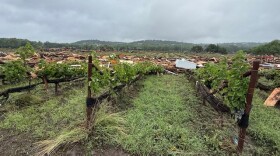-
The National Weather Service says runoff from excessive rainfall could cause flooding of rivers, creeks and low-lying areas.
-
For years, experts in Houston have been studying the idea of building massive tunnels under the area to divert floodwaters and save lives and property. Now, Elon Musk wants a piece of the project.
-
Among the passed proposals is House Bill 1, which seeks to strengthen emergency planning and evacuation procedures at youth camps.
-
The Texas Department of Transportation invoked emergency procedures to expedite the reconstruction of the bridge over Cow Creek along RM 1431. What would normally have taken months to complete was done in 29 days.
-
Austin is currently in the middle of a major overhaul of its floodplain maps. New rainfall data shows flood risk is greater than previously thought.
-
The Central Texas Community Foundation launched a fundraiser with a goal of raising $10 million to support people in AGÕæÈË°Ù¼ÒÀÖ and Williamson counties who were affected by the floods.
-
KUT's Kailey Hunt was reporting near Big Sandy Creek in northwestern AGÕæÈË°Ù¼ÒÀÖ County when a crew of search and rescue workers discovered the body of one of the people missing from the devastating July 5 floods.
-
Severe flooding in the Texas Hill Country nearly wiped out an entire vineyard in Kerrville. It’ll take years to recover.
-
The state Legislature will look at proposals for emergency preparedness in a special session that was already planned over hemp laws. A bill to help build emergency systems failed in the spring.
-
After days of reports of more than 100 missing victims, officials now say the number of missing is significantly lower than originally reported.
Play Live Radio
Next Up:
0:00
0:00
Available On Air Stations










